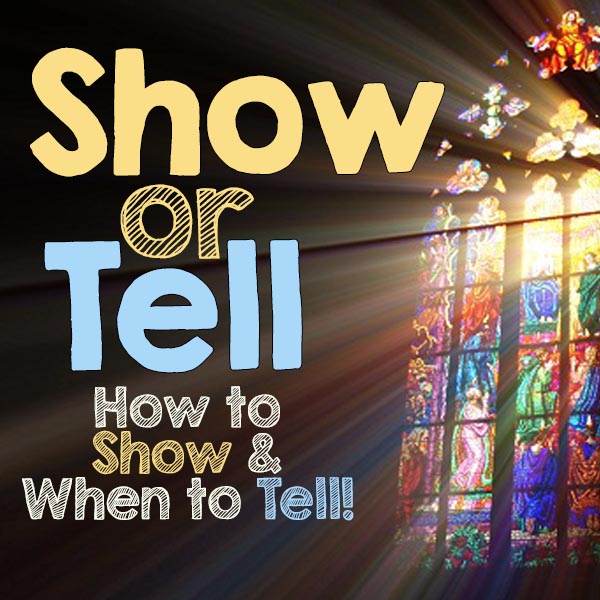I hope you’re busy writing your amazing works of NaNoWriMo fiction!
I thought, as we dive in, it might help to understand what editors mean by “Show, Don’t Tell.” Listen, I know it can be confusing. Especially since there is not only mis-information and bad teaching out there, but also because there IS a time Tell!
Showing, not Telling is not about describing everything that happens. And Telling has nothing to do with narrative and backstory. Narrative and backstory (and even action) get a bad rap because often, during narrative, backstory and action, authors drop into “telling” without realizing it. Describing ACTION by saying “John shot Bill.” is not telling. It’s action. But adding: “John felt sorry when he shot Bill,” would be telling.
See, I know. Confusing.
Here’s the bottom line: Showing is about helping the reader experience the emotions of the character. Showing brings us into the mind and heart of the character to understand their emotional journey.
Here’s how: If you say, ‘She felt grief,’ or even, and this is more common, ‘Grief overtook her’ you are not just telling us what emotion she’s feeling, but you’re pinpointing one emotion your reader must feel with the character. Instead, show us how despair makes her feel through how she acts, what she thinks, what she says and how she sees her world. Let us into your character’s head.
Telling is when you tell someone how to feel. It relates to the emotion to the story, not the narrative, backstory and action.
Here’s an example:
Let’s say your character has just lost her husband. She’s come home from the funeral to the quiet house and gone upstairs to her room. Here are some options:
You could say: She stood in front of the closet and grieved. However, we feel like an onlooker, a voyeur into her world. We are told how she feels, but don’t experience her grief.
Further from that, but also a telling, is: She stood in front of the closet and felt grief course through her. We’re closer to understanding how she feels, but we’ve still been told exactly the emotion she’s experiencing.
Better is: She stood in front of the closet and wept. Here, we’re closer to experiencing what the character is feeling. We might understand what it feels like to stand there and simply weep.
But what if we took it further. What if we let the reader into the character’s skin to feel the grief?
She stood at the edge of the closet and stared at his polished shoes, at his pressed wool suits, at his crisp silky red ties. A tidy man. Not the kind to wrap his car around a tree. But there, in the back…she pushed aside the shirts and pulled out his letter jacket, the one he’d wrapped around her the night they’d met. She inhaled. Thirty years, and still his scent lingered. Please, let it linger. Please let her rewind, go back to the fight, erase her words. Erase his anger. Without a word, she stepped inside the closet, closed the door behind her, pulled the jacket over her, and wept.
Never once do I say that she is grieving. But I weave it in through her perspective, the five senses and rich details and finally her actions.
Here’s the part that people confuse. Often I see people over-showing in their effort to not tell. What happens, then, is they write, “She bent at the knees, lowering herself into the chair,” instead of simply saying, “She sat.” Don’t laugh – I’ll be you could find this in your early drafts! (I know I can!) Authors spend precious words showing how a person rises from a chair, or how they get dressed. Don’t do this! Tell actions that are common to all of us. She tied her shoe, she made coffee, she answered the phone. We all get what this looks like.
However, show actions that you want to make impact. If you want answering the phone to have impact, then have her reach for the phone, check the caller id, maybe hover her thumb over the receive button. Then push it before her courage fails.
Here are the easy rules for Show Don’t Tell:
Tell us everyday actions, SHOW us the important ones that reveal emotions.
Show us the emotion, don’t tell us about it.
Are you bogging down your story by showing actions that have no emotional connection to the story? Here’s a litmus test. Ask: How does the emotion impact your character? Are you showing this emotion through words, action, though and perspective?
Better yet, take the MBT Challenge: Write the scene without naming the emotion! It’ll make you stretch and help you become a better writer.
Have a great NaNoWriMo week! Go – write something brilliant!
Susie May
MBT Head Coach

Comments 1
Excellent teaching, Susan. Thanks so much. Now I’m off to tweak my showing efforts.